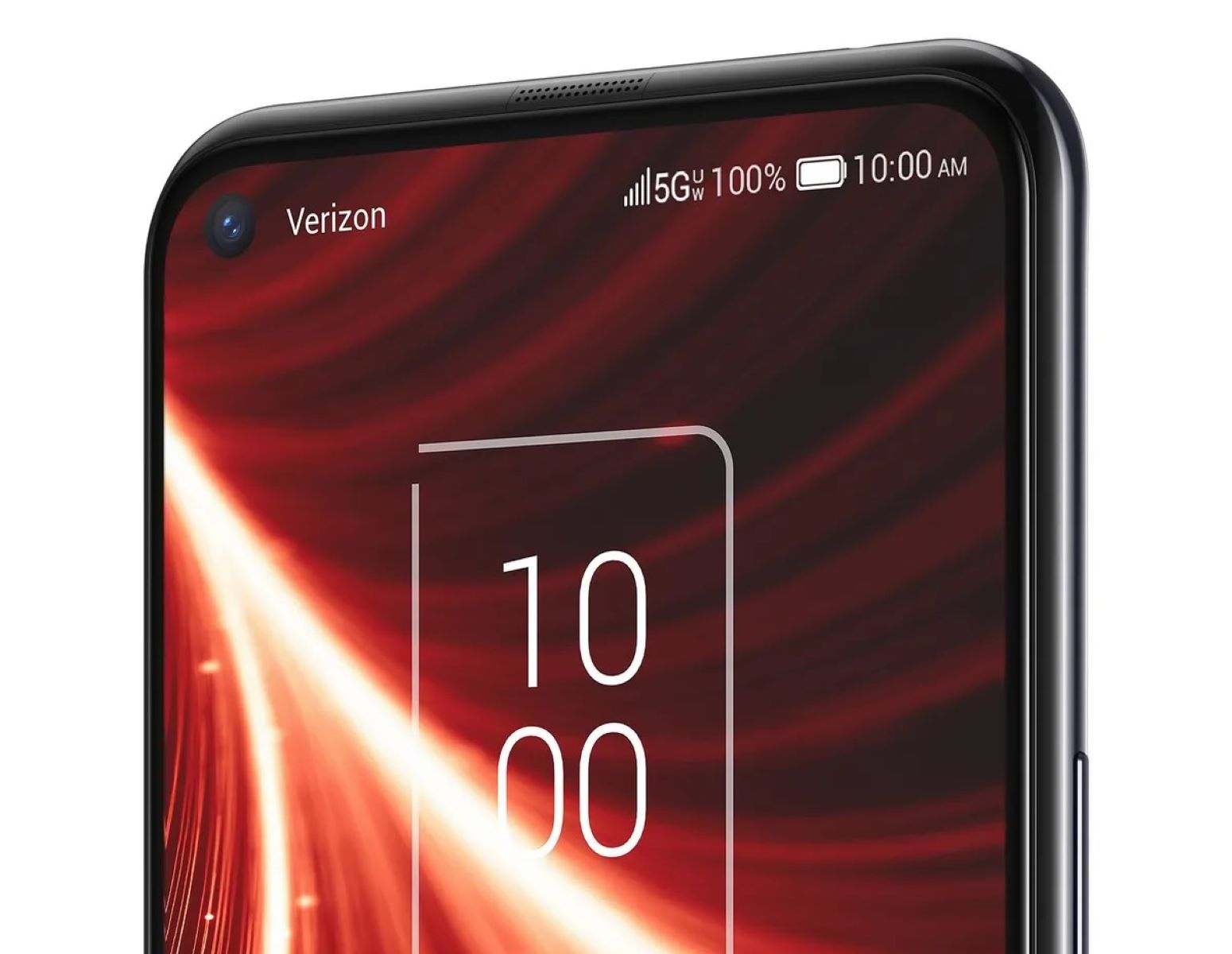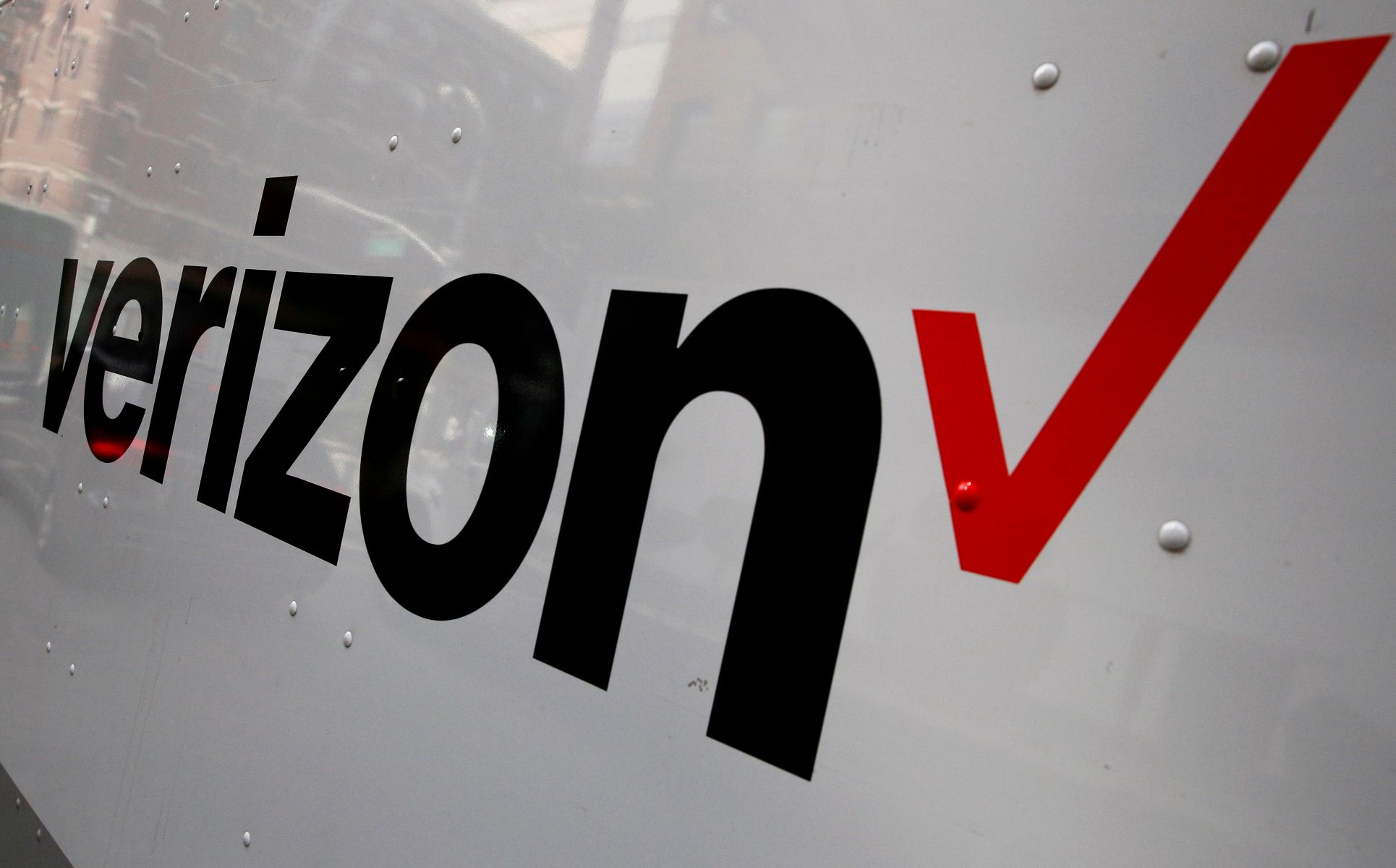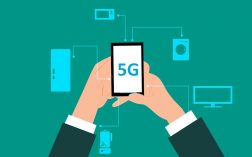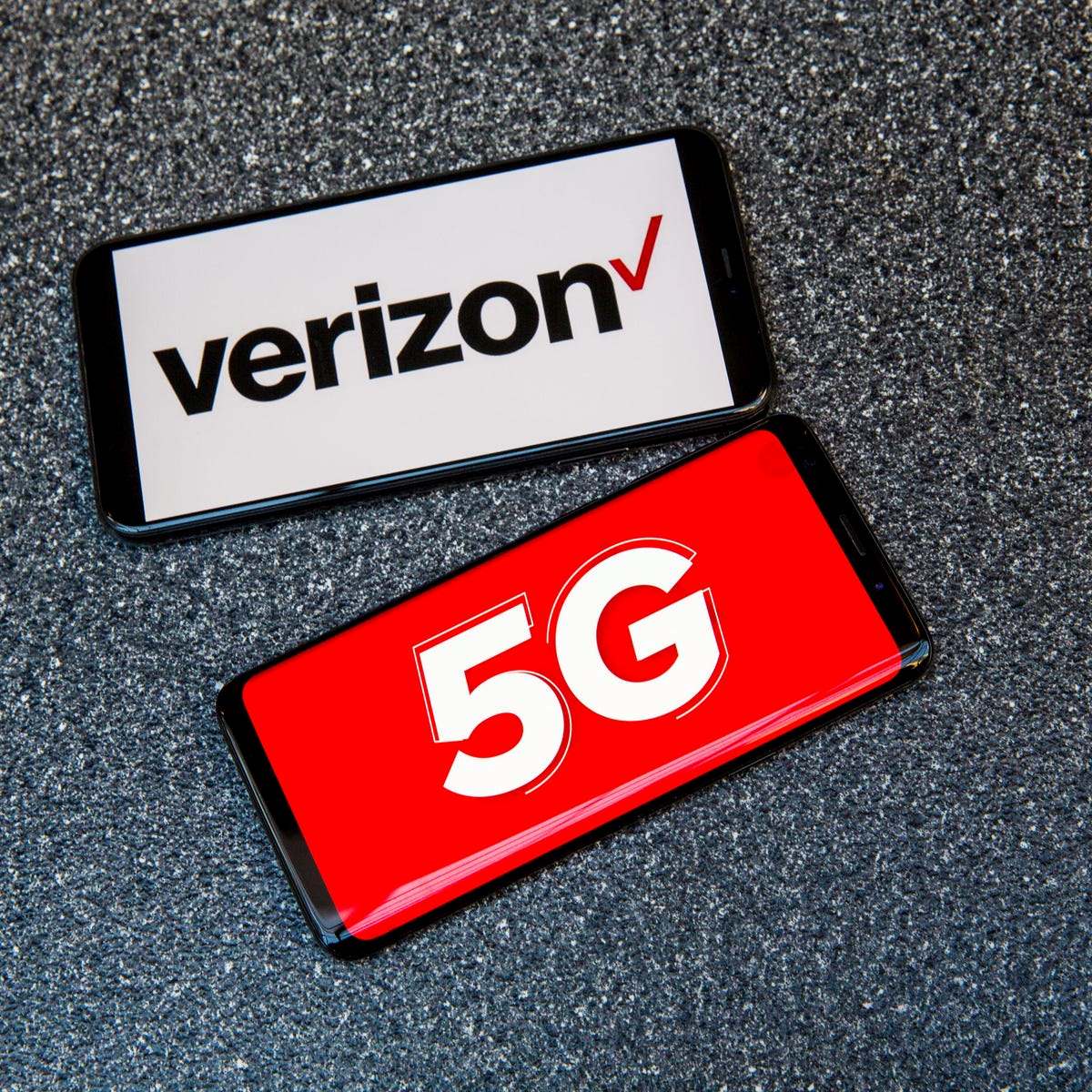Introduction
Welcome to the world of 5G Ultra Wideband, where lightning-fast speeds and incredible connectivity open up a whole new realm of possibilities. In today’s fast-paced digital age, having a robust and reliable network is essential, and 5G Ultra Wideband aims to deliver just that.
5G Ultra Wideband is the next generation of wireless technology, promising unparalleled speed and performance. It operates on higher frequencies, utilizing wider bandwidths, and employing advanced antenna technologies to transmit and receive data at an astonishing rate.
With the increasing demand for data-intensive applications like streaming high-quality videos, online gaming, and virtual reality experiences, traditional networks often struggle to keep up. However, 5G Ultra Wideband is here to revolutionize the way we connect, providing users with a level of speed and responsiveness never seen before.
This breakthrough technology is not just about faster download and upload speeds; it represents a significant shift in how we interact with our devices and explore the digital landscape. From enabling seamless streaming of 4K content on our smartphones to powering smart cities and the Internet of Things (IoT), the future possibilities of 5G Ultra Wideband are boundless.
In this article, we will delve deep into the world of 5G Ultra Wideband, exploring its incredible speeds, real-world examples, and the factors that can affect its performance. We will also discuss the numerous benefits that the high speeds of 5G Ultra Wideband bring to the table. So, buckle up and get ready to embark on a fascinating journey into the era of lightning-fast connectivity.
What is 5G Ultra Wideband?
5G Ultra Wideband is the latest and most advanced iteration of 5G wireless technology. It is designed to provide users with unprecedented speed, low latency, and massive connectivity, paving the way for a future filled with exciting possibilities.
Unlike its predecessors, 5G Ultra Wideband operates on higher frequencies, typically in the millimeter wave spectrum. This allows for larger bandwidths, enabling faster data transmission and reducing congestion on the network. In addition, 5G Ultra Wideband utilizes advanced antenna technologies like massive MIMO (Multiple Input Multiple Output) to optimize signal strength and coverage.
One of the key features of 5G Ultra Wideband is its incredibly low latency. Latency refers to the time it takes for data to travel between devices and back. With 5G Ultra Wideband, latency can be reduced to a fraction of what we experience with previous generations of wireless technology.
Another notable aspect of 5G Ultra Wideband is its ability to support a massive number of connected devices simultaneously. This is crucial in the era of the Internet of Things (IoT), where billions of devices, from smart home appliances to autonomous vehicles, will rely on a stable and efficient network to communicate and function.
In addition, 5G Ultra Wideband brings significant improvements to network capacity and reliability. By utilizing a combination of technologies like beamforming and network slicing, it can provide robust connectivity even in crowded areas with high user demands.
It is important to note that 5G Ultra Wideband is just one variant of 5G technology. There is also 5G Low Band and 5G Mid Band, each with its own strengths and use cases. While 5G Ultra Wideband excels in providing exceptional speeds and low latency, other variants may offer better coverage and penetration through obstacles.
Overall, 5G Ultra Wideband represents a significant leap forward in wireless technology. It promises to revolutionize industries, drive innovation, and enable a whole new range of applications and services that were once unimaginable. From immersive virtual reality experiences to autonomous vehicles and smart cities, the age of 5G Ultra Wideband is set to redefine our digital future.
How fast is 5G Ultra Wideband?
When it comes to speed, 5G Ultra Wideband is in a league of its own. It offers blistering fast download and upload speeds that dwarf those of previous wireless technologies.
On average, 5G Ultra Wideband has the potential to reach peak download speeds of up to 10 Gbps (Gigabits per second). To put that into perspective, it is more than 100 times faster than the average download speed of 4G LTE networks. With such incredible speeds, you can download a full-length HD movie in a matter of seconds.
But it doesn’t stop there. 5G Ultra Wideband also delivers impressive upload speeds, allowing you to share large files, stream high-quality videos, and engage in video calls without any lag or buffering. With upload speeds that can exceed 1 Gbps, you can effortlessly upload your content to the cloud, collaborate with colleagues in real-time, and participate in immersive virtual meetings.
These mind-boggling speeds are made possible by the combination of higher frequencies and wider bandwidths used in 5G Ultra Wideband. By utilizing millimeter wave frequencies, 5G Ultra Wideband can transmit data at a much faster rate compared to lower frequency bands.
However, it is important to note that the actual speeds experienced by users may vary depending on several factors. These include the proximity to 5G Ultra Wideband cell towers, the number of users in the area, and the available network capacity.
Despite this, even in real-world scenarios, 5G Ultra Wideband can provide users with significantly faster speeds compared to traditional networks. Whether you are streaming high-definition content, gaming online, or downloading large files, 5G Ultra Wideband ensures a smooth and seamless digital experience.
As the rollout and adoption of 5G Ultra Wideband continue to expand, more areas will have access to these incredible speeds. This opens up a world of possibilities for businesses, individuals, and entire communities, enabling them to embrace technological advancements and unlock new opportunities that were once unimaginable.
Real-world examples of 5G Ultra Wideband speeds
5G Ultra Wideband has already started to make waves in the real world, showcasing its lightning-fast speeds and transforming the way we interact with technology. Let’s explore some notable examples of 5G Ultra Wideband speeds in action:
1. Mobile streaming: With 5G Ultra Wideband, mobile streaming reaches new heights. You can seamlessly stream high-definition videos, enjoy buffer-free music streaming, and indulge in immersive gaming experiences on your smartphones and tablets. Say goodbye to frustrating buffering interruptions and hello to uninterrupted entertainment.
2. Augmented Reality (AR) and Virtual Reality (VR) applications: 5G Ultra Wideband opens up a world of possibilities for AR and VR applications. Imagine being able to enjoy realistic virtual experiences, explore virtual environments, and interact with digital objects in real-time, all with ultra-low latency and incredibly high speeds. From immersive gaming to virtual travel experiences, 5G Ultra Wideband takes AR and VR to a whole new level.
3. Autonomous vehicles: The future of transportation relies heavily on connectivity, and 5G Ultra Wideband plays a crucial role in enabling autonomous vehicles. With its low latency and rapid communication capabilities, 5G Ultra Wideband ensures that autonomous vehicles can make split-second decisions, communicate with other vehicles and infrastructure, and navigate safely and efficiently.
4. Smart cities and IoT: The vision of smart cities is becoming a reality with the help of 5G Ultra Wideband. From smart traffic management and energy-efficient systems to remote healthcare and intelligent infrastructure, 5G Ultra Wideband powers the network that connects various devices, sensors, and systems, enabling seamless communication and data exchange.
5. Enterprise applications: Businesses can leverage the power of 5G Ultra Wideband to drive innovation and transform their operations. Whether it’s augmented reality-assisted remote maintenance, real-time data analytics, or seamless cloud connectivity, 5G Ultra Wideband empowers enterprises to enhance productivity, improve efficiency, and deliver exceptional customer experiences.
These examples are just the tip of the iceberg, demonstrating the incredible speeds and capabilities of 5G Ultra Wideband. As 5G networks continue to expand and evolve, we can expect to see even more exciting applications and use cases emerge, revolutionizing industries and transforming the way we live, work, and connect with the world around us.
Factors that can affect 5G Ultra Wideband speeds
While 5G Ultra Wideband offers incredible speeds, there are several factors that can influence the actual speeds experienced by users. It’s important to understand these factors to manage expectations and optimize the performance of 5G Ultra Wideband. Let’s explore some key factors that can affect 5G Ultra Wideband speeds:
1. Proximity to cell towers: The distance between your device and the nearest 5G cell tower can have a significant impact on the speeds you experience. The closer you are to a tower, the stronger and faster the signal is likely to be. If you are far away from a cell tower, you may experience slower speeds and weaker connectivity.
2. Obstacles and interference: Physical objects such as buildings, trees, and even weather conditions can obstruct and interfere with 5G signals. This can result in reduced speeds and lower signal strength. For optimal performance, it’s ideal to have a clear line of sight to the cell tower without any significant obstructions.
3. Network congestion: In areas with a high concentration of users, such as crowded stadiums or busy urban centers, network congestion can occur. When there are too many devices trying to access the network simultaneously, it can lead to slower speeds as the network’s resources are shared among more users. Network operators are continually working to increase capacity and minimize congestion, but peak usage times may still impact speeds.
4. Device capabilities: The capabilities of your device, such as its modem and antennas, can impact your 5G Ultra Wideband speeds. Older devices or those with less advanced technology may not be able to fully utilize the potential speeds offered by 5G Ultra Wideband. Upgrading to a device that is specifically designed to support 5G can help ensure optimal performance.
5. Network coverage: While 5G Ultra Wideband is rapidly expanding its coverage, it is not yet available everywhere. Limited network coverage can impact the availability and speeds of 5G Ultra Wideband in certain areas. As network infrastructure continues to grow, coverage will improve, offering more consistent and widespread access to high-speed 5G connectivity.
By considering these factors and understanding their potential impact, users can make informed decisions about their 5G Ultra Wideband experiences. While some factors are beyond individual control, such as network coverage and network congestion, optimizing device capabilities and ensuring a clear line of sight to cell towers can help maximize the speeds and performance of 5G Ultra Wideband.
Benefits of 5G Ultra Wideband’s high speeds
The high speeds offered by 5G Ultra Wideband bring a multitude of benefits that revolutionize the way we live, work, and connect. Let’s explore some of the key advantages of 5G Ultra Wideband’s blazing fast speeds:
1. Enhanced productivity: With the ability to download and upload files at lightning speed, 5G Ultra Wideband empowers individuals and businesses to be more productive. You can quickly transfer large files, collaborate in real-time, and access cloud-based applications seamlessly. This translates into increased efficiency and faster completion of tasks.
2. Improved entertainment experiences: 5G Ultra Wideband’s high speeds deliver unparalleled entertainment experiences. Streaming high-definition videos, gaming without lag, and enjoying immersive virtual reality content become a breeze, with no buffering or interruptions. It opens up a whole new level of enjoyment for multimedia consumption.
3. Seamless video conferencing and remote collaboration: With 5G Ultra Wideband, video conferencing and remote collaboration become seamless and efficient. The high speeds ensure crystal-clear video and audio quality, enabling seamless communication and collaboration with teams and clients worldwide. This is especially crucial in the era of remote work and virtual meetings.
4. Enablement of cutting-edge technologies: 5G Ultra Wideband unlocks the full potential of emerging technologies like augmented reality (AR), virtual reality (VR), and connected devices. The high speeds and low latency provided by 5G allow for real-time rendering and interaction with AR/VR content, while also supporting the mass connectivity of Internet of Things (IoT) devices, facilitating the growth of smart homes, cities, and industries.
5. Accelerated innovation: The high speeds of 5G Ultra Wideband enable faster data transfer, facilitating the development and deployment of innovative technologies. From autonomous vehicles to advanced healthcare solutions, 5G Ultra Wideband accelerates innovation by providing the necessary infrastructure for cutting-edge applications and services.
6. Economic growth and competitiveness: As countries and industries embrace 5G Ultra Wideband, it drives economic growth and enhances their competitiveness on a global scale. The high-speed connectivity enables businesses to streamline operations, improve customer experiences, and unlock new revenue streams, contributing to economic development and job creation.
7. Quick access to information: With 5G Ultra Wideband, accessing information becomes instantaneous. Whether it’s searching the web, downloading e-books, or accessing cloud-based files, the high speeds ensure quick access to information, enhancing education, research, and everyday information retrieval.
These benefits signify the transformative power of 5G Ultra Wideband’s high speeds. From boosting productivity to enhancing entertainment and enabling groundbreaking technologies, 5G Ultra Wideband revolutionizes the way we live and engage with the world, opening up new possibilities that enhance our everyday experiences.
Conclusion
5G Ultra Wideband is undeniably a game-changer in the world of wireless technology. With its lightning-fast speeds, low latency, and massive connectivity, 5G Ultra Wideband opens up a world of possibilities for individuals, businesses, and entire communities.
Throughout this article, we have explored what 5G Ultra Wideband is and how it differs from previous wireless technologies. We have seen the incredible speeds it offers, with download and upload speeds that dwarf those of 4G LTE networks. We have also examined real-world examples of how 5G Ultra Wideband is transforming industries and enabling innovative applications and services.
However, it is important to understand that the full potential of 5G Ultra Wideband will be realized over time. As the network infrastructure expands and more devices become 5G-enabled, we can expect even more exciting developments and use cases to emerge.
With all the advantages that 5G Ultra Wideband brings, it’s important to remember that there are factors that can affect its speeds, such as proximity to cell towers and network congestion. Being aware of these factors can help manage expectations and optimize the performance of 5G Ultra Wideband.
In conclusion, 5G Ultra Wideband represents a significant leap forward in wireless technology, providing unprecedented speeds and capabilities. It has the potential to redefine how we connect, communicate, and experience the world around us. From enhanced productivity and entertainment experiences to accelerated innovation and economic growth, the opportunities offered by 5G Ultra Wideband are truly transformative.
As we embark on this new era of lightning-fast connectivity, let’s embrace the possibilities that 5G Ultra Wideband brings and fully explore the potential it holds for shaping our digital future.

























